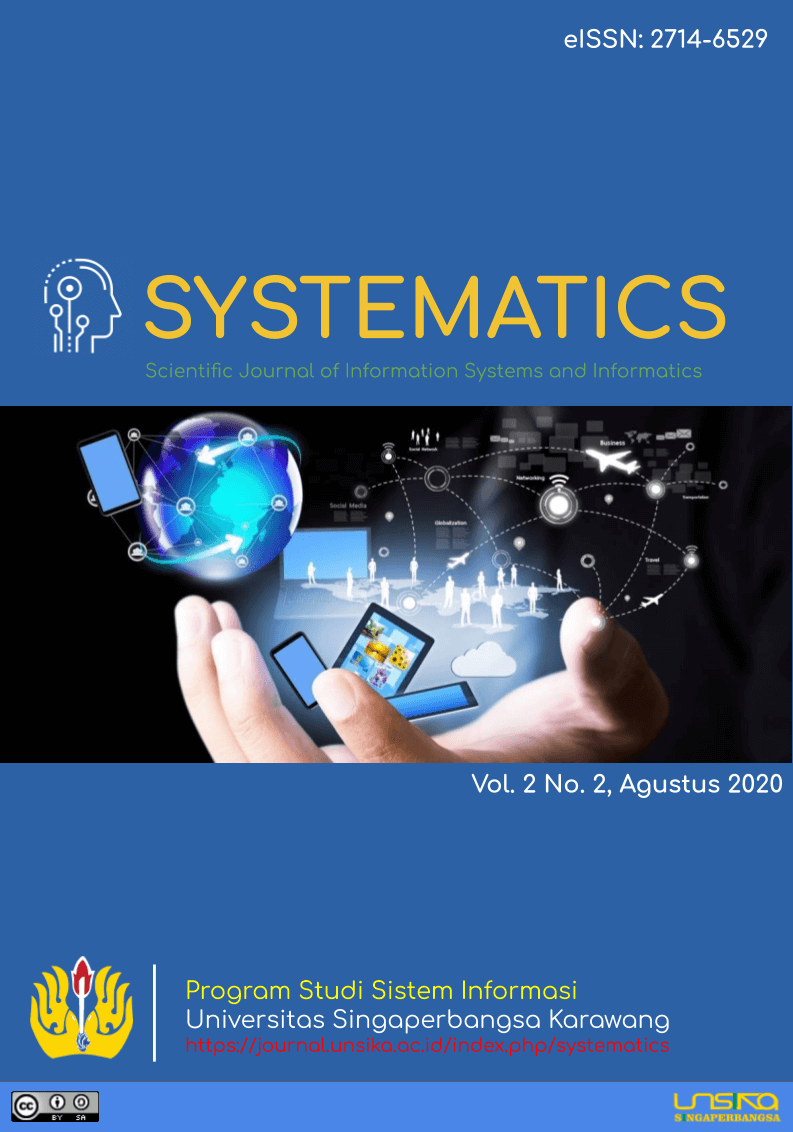Design and Development of Automation System for Measurement of Flow Nozzle Robot Spray Based on Programmable Logic Controller and Human Machine Interface at PT ADM Casting Plant
DOI:
https://doi.org/10.35706/sys.v2i2.3771Abstract
The spray is one of the important processes in the metal smelting industry that uses die casting machines to make aluminium products. This spraying process serves to prevent the problem of stamps (products attached to the dies/mold) due to overheating (overheating) on the surface of the dies. The main device in this spraying process is the nozzle that is driven by a coil from the solenoid valve. To maintain the quality of the output spray to remain standard, routine maintenance is carried out manually by two operators. Operator one is outside the machine area to see the digital flow sensor display and the second operator is inside the machine area to operate the solenoid valve nozzle spray. Communication between operators plays an important role when carrying out the process of flow spray measurement. This treatment takes 7 hours. The problems found are the lack of security for operators inside the engine area due to the potential for accidents, inaccurate measurements because there is always a pause when communicating between operators inside and outside the engine area and inefficient maintenance time. The purpose of this study is to make a flow nozzle spray measurement system that is safe, accurate, and efficient. This research method uses literature and descriptive methods. The design of this system is done by creating a new display that contains a measurement menu and a record of flow spray measurement data through a Human Machine Interface (HMI) device in the form of an NS-8 Series Omron touch screen that is integrated with a Q-Series Programmable Logic Controller (PLC) type device. Mitsubishi as a controller. From the results of this study, it can be concluded that the flow nozzle spray measurement system display is safer and displays accurate and efficient measurement results because the measurement process is carried out automatically and is operated by one operator outside the machine area.
Downloads
References
Grover, Mikell P. 2010. Automation, production systems, and computer integrated manufacturing, Second edition. New Jersey: Prentie.
P. Gruhn.2011. Human Machine Interface (HMI) Design: The Good , The Bad , and The Ugly (and what makes them so ). 66th Annu. Instrum. Symp. Process Ind., pp
Irawan, A. S. Y., & Prihandani, K. (2019). Sistem Pengontrol Lampu Berbasis Internet Dengan Metode Virtual Prototype. Systematics, 1(1), 12-21.
Wisnu, Jatniko, dkk. 2014. Robotika: Teori dan Aplikasi. Jakarta: Erlangga.
Dennis, Alan, Barbara Haley Wixom and Roberta M. Roth. 2012. System Analysis and Design. United States: John Wiley & Sons, Inc.
Indrajani, 2015, Database Design, Jakarta: PT Elex Media Komputindo. Hartono, Jogiyanto, 2013, Metodologi Penelitian Bisnis, Yogjakarta: BPFE.
Mulyani, Sri. 2016. Metode Analisis dan Perancangan Sistem. Edisi Kedua cetakan ke-1. Bandung: Abdi Sistematika.
Downloads
Published
How to Cite
Issue
Section
License
Copyright (c) 2020 SYSTEMATICS

This work is licensed under a Creative Commons Attribution-ShareAlike 4.0 International License.
Authors who publish with this journal agree to the following terms:
- Authors retain copyright and grant the journal right of first publication with the work simultaneously licensed under a Creative Commons Attribution-ShareAlike 4.0 International License. that allows others to share the work with an acknowledgement of the work's authorship and initial publication in this journal.
- Authors are able to enter into separate, additional contractual arrangements for the non-exclusive distribution of the journal's published version of the work (e.g., post it to an institutional repository or publish it in a book), with an acknowledgement of its initial publication in this journal.
- Authors are permitted and encouraged to post their work online (e.g., in institutional repositories or on their website) prior to and during the submission process, as it can lead to productive exchanges, as well as earlier and greater citation of published work (See The Effect of Open Access).







